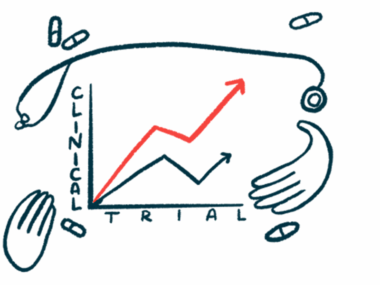ECTRIMS 2025: Standard Ocrevus dose holds up in PPMS
Trial confirms risk-benefit profile of approved 600 mg dose
Written by |

Increasing the dose of Ocrevus (ocrelizumab) by two- or threefold, depending on a person’s weight, did not provide additional benefit in slowing disability progression compared with the standard regimen in people with primary progressive multiple sclerosis (PPMS).
That’s according to top-line data from the Phase 3b GAVOTTE trial (NCT04548999), where the high-dose regimen was also similar to the standard 600 mg dose in terms of safety, and led to no differences in clinical outcomes such as cognition, walking function, and dexterity.
Together with earlier data from the MUSETTE Phase 3 trial (NCT04544436) in relapsing forms of multiple sclerosis (MS), the results reinforce the robustness of the approved Ocrevus dose in people with the disease.
“GAVOTTE confirms the favorable benefit-risk profile of the approved 600 mg dose of [Ocrevus] for the treatment of patients with PPMS,” said Stephen Hauser, MD, a neuroimmunologist and director of the University of California San Francisco Weill Institute for Neurosciences. “It is evident that the high dose of [Ocrevus] had no additional benefit in reducing the risk” of confirmed disability progression in PPMS.”
Hauser shared the new data at the European Committee for Treatment and Research in Multiple Sclerosis (ECTRIMS) Congress, held Sept. 24-26 in Barcelona, Spain, in a presentation titled, “Efficacy and safety of a body-weight–adjusted high dose of ocrelizumab vs standard dose in PPMS: primary results of the Phase IIIb GAVOTTE study.” The work was funded by Roche, which markets Ocrevus through its subsidiary Genentech.
Reducing inflammation by targeting B-cells
Ocrevus is the only approved treatment for PPMS, and is also indicated for relapsing forms of MS. It is designed to reduce MS inflammation by depleting B-cells, a type of immune cell with a central role in MS. The medication is administered into the bloodstream every six months at a dose of 600 mg, following two 300 mg loading doses.
Ocrevus’ approval for PPMS was based on data from the ORATORIO Phase 3 study (NCT01194570), in which the therapy outperformed a placebo at delaying confirmed disability progression.
However, later analyses suggested that patients with higher blood levels of Ocrevus experienced greater B-cell depletion and a lower risk of confirmed disability progression compared with those with lower drug exposure.
Because all participants received the same dose, this generally meant that “lighter patients had the higher exposure, and less disability progression,” Hauser said.
Prompted by this observation, Roche launched two Phase 3 trials to test the safety and efficacy of weight-adjusted, higher doses of Ocrevus. GAVOTTE compared this regimen against the standard dose in people with PPMS, while MUSETTE was designed to evaluate the same approach in relapsing forms of MS.
GAVOTTE “was designed to ask if higher doses of ocrelizumab could more effectively attenuate B-cell pathology, and especially disability, in PPMS,” Hauser said.
A total of 753 participants, mainly women (53%), were enrolled. Hauser said the patient demographics “matched beautifully” those of the original ORATORIO study.
Participants were randomly assigned to receive Ocrevus at the approved 600 mg dose or a higher dose: 1,200 mg for patients weighing less than 75 kg (about 165 pounds) or 1,800 mg for those weighing 75 kg or more.
The first two doses were administered as 300 mg in the standard-dose group and 600 mg or 900 mg infusions in the high-dose group, given 14 days apart. Participants then continued with their assigned dose once every six months for at least 120 weeks (over two years).
The trial’s main goal is to assess the time to 12-week confirmed disability progression, defined as a worsening in the Expanded Disability Status Scale (EDSS) or in tests of walking ability or manual dexterity that was sustained for at least 12 weeks.
Results showed that the time to 12-week confirmed disability progression was similar for patients given high-dose Ocrevus or the standard dose. Other measures of disability progression, as well as cognition, brain volume, and markers of nerve cell damage also showed no notable differences between the two groups.
The overall safety profile was also “quite similar between the two arms, with no unusual or surprising safety features identified,” Hauser said.
“The control of disability progression was unchanged when the dose was increased above the approved dosing of [Ocrevus] in primary progressive MS, and the safety profiles of both treatment arms were similar,” Hauser said.
Note: The Multiple Sclerosis News Today team is providing live coverage of the 41st Congress of the European Committee for Treatment and Research in Multiple Sclerosis (ECTRIMS) Sept. 24-26. Go here to see the latest stories from the conference.






